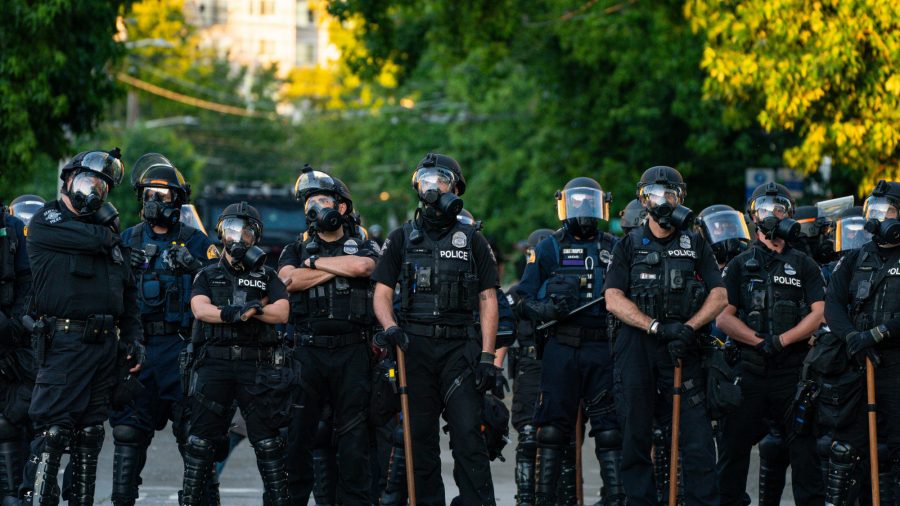Seattle, Washington, has been laying out plans to abolish its police department as the wider county lays out a path to getting rid of the region’s largest jail and abolish juvenile detention.
The city plans to replace the police department with a “civilian led Department of Community Safety & Violence Prevention,” according to a resolution published last week.
A majority of the City Council has endorsed defunding the department, though latest developments suggest at least a slowdown of the plan.
In a series of budgetary proposals, the council plans to cut police staff by about 8 percent this year. The proposals “appear to have enough support to pass,” according to The Seattle Times, and the council has promised to go further next year with around a 40 percent cut to the police budget. Eight of the nine-member council are Democrats, while one is a member of the Socialist Alternative, a self-described Marxist revolutionary party.
Meanwhile, Seattle has had a growing violence problem. Violent crime is up more than 40 percent between 2008 and 2019, particularly aggravated assaults, which have nearly doubled, police department data shows. Despite the economic shutdown this year, violent crime numbers keep pace with last year, according to data from July 8 (pdf). Burglaries are up by 23 percent, arson by 85 percent, likely due to regular protests and riots that have often included vandalizing property.
While the council pushes for the nixing of police, abolishing the jails is spearheaded by the government of King County, Washington, which includes the city, the surrounding suburbs, and some more sparsely populated areas to the east.
The county plans to abolish youth detention by 2025, according to a July 21 internal memo from John Diaz, the county’s director of the Department of Adult and Juvenile Detention. That includes converting for “community programs” the Patricia H. Clark Children and Family Justice Center, the youth detention facility the county just finished at the cost of more than $240 million.
The Seattle jail, King County Correctional Facility, should be phased out, Diaz said, with the help of “programs for prevention, diversion, rehabilitation, and harm reduction.”
The facility, finished in 1986, is “considered obsolete” and is “expensive to operate and doesn’t serve our security, healthcare, or efficiency needs,” he said.
“We hope to have more details … later this year.”
‘Marxist Class Analysis With Sonic X-rays’
The Seattle draft resolution speaks of “white supremacy culture” in the United States and calls policing a “racist institution” that perpetuates “racism and violence.”
A working group established by King County used similar wording as part of an initiative to abolish youth detention.
It claims “White Supremacy Culture … justifies and binds together the U.S. white supremacy system,” according to documents obtained by Christopher Rufo, director of Discovery Institute’s Center on Wealth and Poverty.
“It is the glue that binds together white-controlled institutions into systems and white-controlled systems into the global white supremacy system,” one of the documents says.
The group bases its approach on intersectional theory, which advocates for the elimination of traditional institutions of Western civilization and replacing them with socialist ones. The theory divides all people into “oppressors” and the “oppressed” based on characteristics such as race, sex, sexual proclivities, immigration status, and others.
“It objectifies the individual as a function of power structures, while devaluing, if not denying, individual agency and self-determination,” said Michael Rectenwald, former liberal studies professor at the New York University, in an email.
“As such, it is a highly granular means of classification, something like Marxist class analysis with sonic x-rays.”
When police arrest a black youth for a crime, for instance, it’s the result of a “structure” formed, among other things, by “white supremacist culture,” one of the documents says.
This structure is in turn formed by “mental models” of racism, “white resistance (fragility),” and “blame the victim (youth, families, communities).”
By “victim,” the document refers to the criminal, not the victim of the crime.
“Racism,” one of the documents says, means a combination of “racial prejudices” with “social and institutional power.”
Rather than just an individual’s view of others, racism is “a system of advantage and oppression based on race and built to maintain white supremacy,” the document says, adding that “any act that even unwittingly tolerates, accepts or reinforces racially unequal opportunities or outcomes for youth to thrive” is racist.
“Racism is used in this blanket sense so that any negative experiences or outcomes of persons-of-color can be attributed to it, and nothing else,” Rectenwald said. “Thus, the consequences of robbing a bank as a person-of-color must, in the end, be attributable to systemic racism.”
Seattle youth are sent to the juvenile jail mostly for more serious crimes—felonies.
Of more than 350 juveniles sent to secure detention for the first time in 2019, less than 23 percent were sent for a misdemeanor crime. The rest were for felonies. For black youth, the ones with misdemeanors comprised less than 20 percent, according to data provided by King County.
The documents, Rectenwald said, “provide evidence that the victim ideology of intersectionality has migrated well beyond universities to become the official doctrine of the state, not only in Seattle, but in the U.S. more generally.”
“The intent of intersectionality is to drain public discourse and policy of the belief in individual self-determination and responsibility as it explains everything with reference to social identity classification and the power relations between social identity groups,” he said.
The office of County Executive Dow Constantine didn’t respond to a request for comment.
From The Epoch Times

